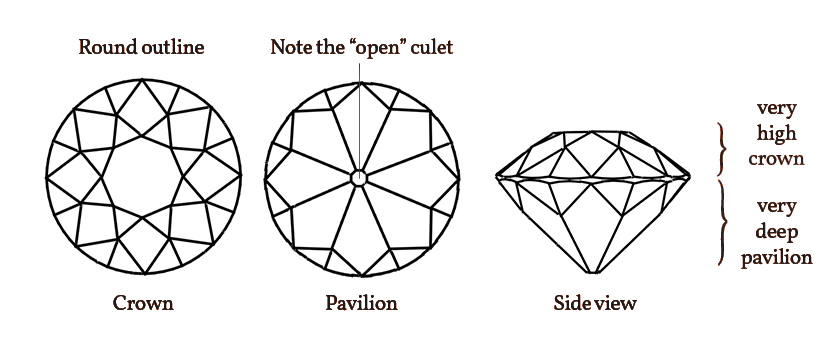The question most frequently asked to jewelry experts is “what is the difference between antique cut and contemporary cut diamonds?” The answer is to be found primarily in the fascinating historical and technological evolution that has taken place at the cutting wheel. For centuries diamond cutters have applied different approaches and techniques, by hand, to the ancient rough crystals that come from the earth. Most of our Jewelry collection dates from the 19th century to the middle of the 20th century, a period of time that beautifully encapsulates a range of artful and inventive techniques used to bring out the best in each unique diamond crystal. Unlike contemporary diamond cutting, which primarily uses machines and endeavors to create a reliably identical product on a mass-produced scale, the diamonds of the past differ from those of the present and also from one another. Their captivating subtleties, coupled with their increasing rarity, makes their unique charms highly desirable and sought after.





The popular expression ‘the 4C’s’ refers to the most significant factors used in classifying diamonds: Color, Clarity, Cut and Carat Weight. These four factors combine to determine every diamond’s beauty, rarity and value.

